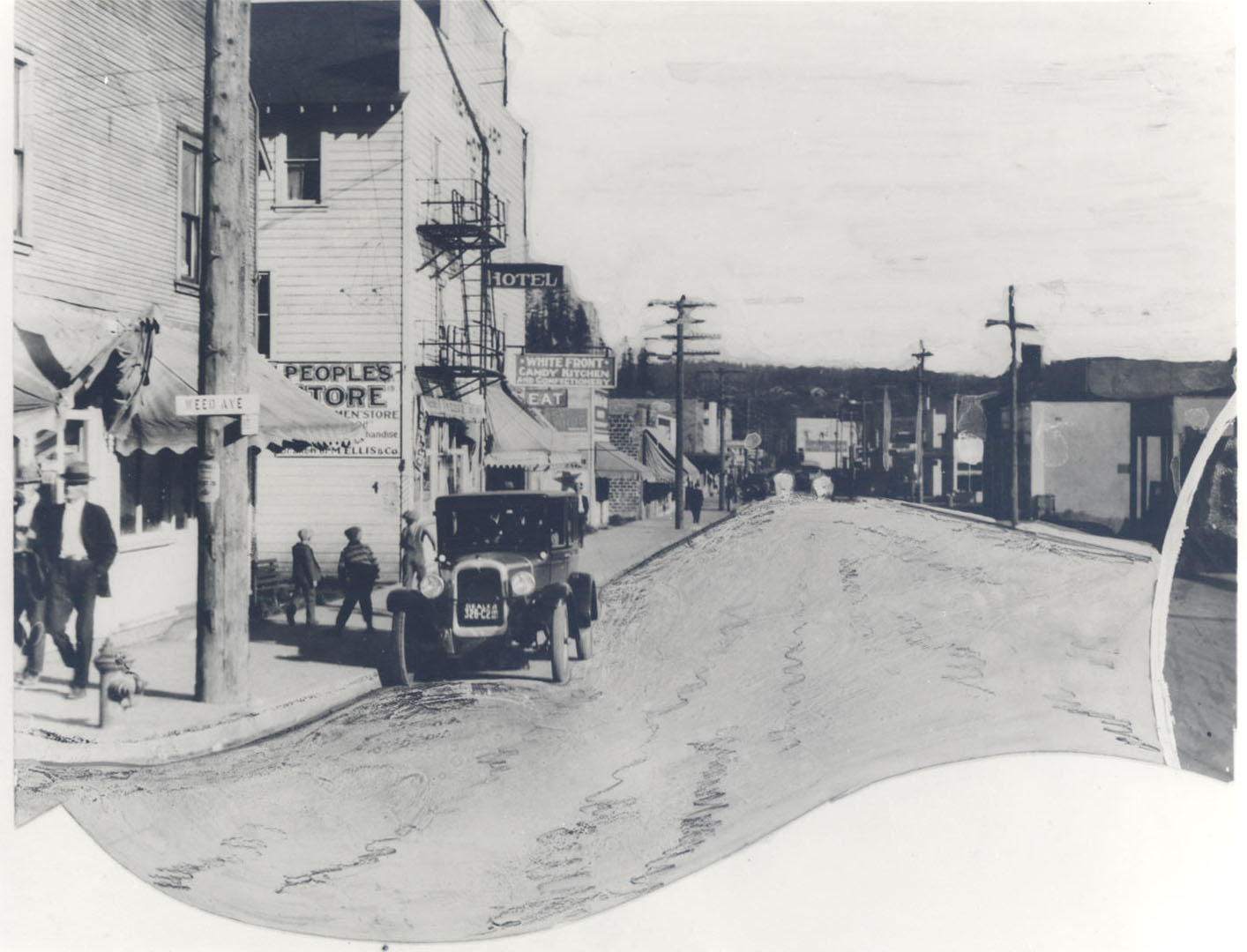Vernonia lies in the upper Nehalem Valley of northwestern Oregon. With roughly 2,300 people, the town occupies about 1.5 square miles of land bisected by the Nehalem River.
The earliest white settler in the area, Clark Parker, arrived in 1874, followed by the Van Blaricom family in 1875. A year later, Ozias Cherrington joined them with his cousin Judson Weed and suggested that they name the town Vernona after his eight-year-old daughter, who was in Ohio. His fellow settlers agreed, but an error during incorporation led to the insertion of an extra letter, making it Vernonia.
The Oregon-American (O-A) Lumber Company opened in Vernonia in 1924, when the town had about 150 residents. The company brought in 200 workers, and by 1929, 495 people worked for the company. O-A Lumber deeded its company housing to the City of Vernonia in 1960, after the company closed in 1958. O-A and the Spokane, Portland & Seattle Train Company built a railroad from Vernonia to Banks to transport lumber from the sawmill. The roadbed was turned into a hiking trail by the Oregon Parks and Recreation Department in 1990.
The Nehalem River cuts through town, and Vernonia has suffered several damaging floods. During a major flood in 1996, water levels reached five feet in the downtown area, and many houses in lower parts of town were flooded.
In December 2007, floodwater again rose in Vernonia, inundating many homes in fewer than six hours. The middle school and high school were destroyed, and roads remained hazardous for a week. Hundreds of houses were destroyed or damaged. It wasn’t until October 1, 2009, that the last flood victims were moved out of government-provided trailer homes. The cost of reconstructing the town’s schools was estimated at $35 million. Construction on a new building for kindergarten through twelfth grade began in a new location above the floodplain, funded largely through donations from businesses and a student-run fundraising campaign called, "Donate a Dollar, Build a School, Save a Town."
Vernonia has occasionally been in the national news. In 1991, a seventh-grade student and his parents sued the Vernonia School District claiming that random drug searches on athletes were a violation of the Fourth and Fourteenth Amendments of the U.S. Constitution. The case went to the U.S. Supreme Court, which ruled that it is legal for schools to perform the searches.
The 1961 movie Ring of Fire was filmed in and around the town, and parts of an old sawmill were burned for some of the scenes. Vernonia was also the location for the television show Ax Men and the film Twilight (2008). The town is the birthplace of photographer Christopher Burkett (born 1951), who is best known for his photographs of Ansel Adams.
-
![Vernonia, Oregon, 1925]()
Vernonia, Oregon, 1925.
Vernonia, Oregon, 1925 Courtesy Oreg. Hist. Soc. Research Lib., neg. no.56378
-
![Vernonia, Main Street]()
Vernonia, Main Street.
Vernonia, Main Street Courtesy Oreg. Hist. Soc. Research Lib., neg. no.48465
-
![Bunkhouses from coal and coke company, 1922]()
Bunkhouses from coal and coke company, 1922.
Bunkhouses from coal and coke company, 1922 Courtesy Oreg. Hist. Soc. Research Lib., 56379
Related Entries
-
![Oregon-American Lumber Company]()
Oregon-American Lumber Company
The Oregon-American Lumber Company (1917-1934) and its successors—the O…
-
![Rainier]()
Rainier
On a clear day, residents of Rainier, Oregon, have a view of the town's…
-
![Scappoose]()
Scappoose
Located on the Multnomah Channel twenty miles northwest of Portland, Sc…
-
![St. Helens]()
St. Helens
St. Helens is a Columbia River town located eighty-six river miles from…
Map This on the Oregon History WayFinder
The Oregon History Wayfinder is an interactive map that identifies significant places, people, and events in Oregon history.
Further Reading
“Vernonia stunned as river turns into rapidly rising trap.” The Oregonian, December 5, 2007.
Kamholz, Edward, Jim Blain, and Greg Kamholz. The Oregon-American Lumber Company: Ain't No More. Stanford, Calif.: Stanford University Press, 2003.







